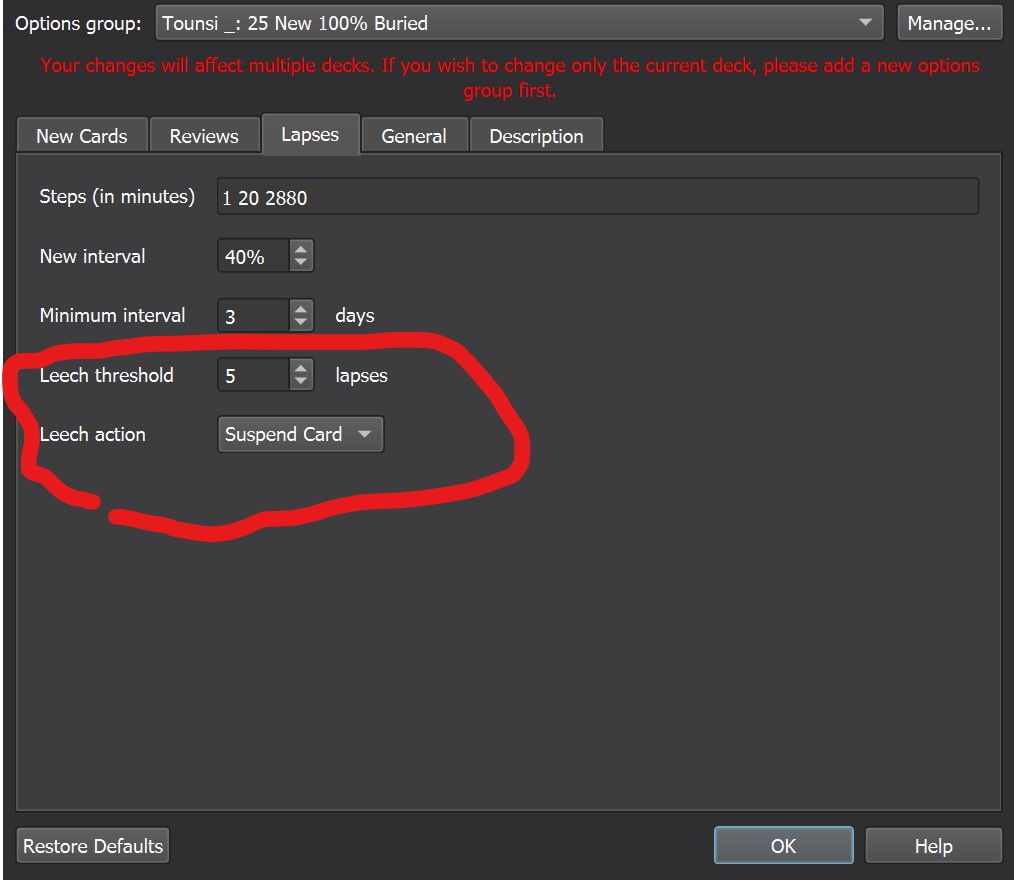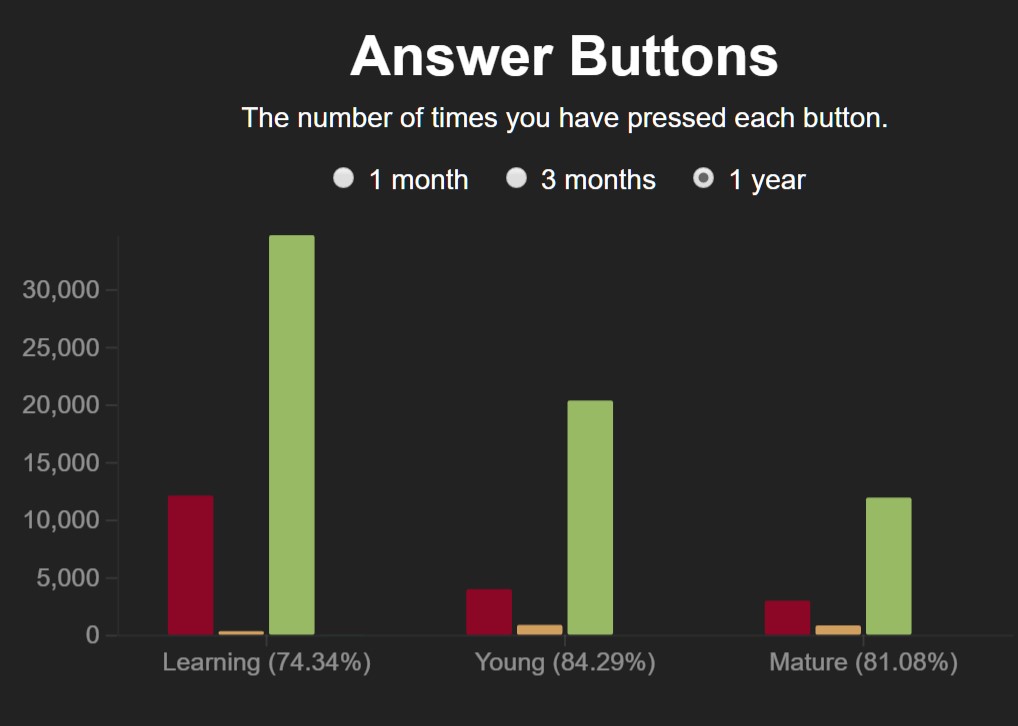Miscellaneous 5 – Learning Resources (Not Language-Specific)
Anki Part II: How to manage forgetting
Forgetting is a natural part of language learning, but it can be disheartening to language learners. While Anki is considered to be a tool to help students memorize information, it also has features that let us manage they way we forget information. For most humans, it is impractical to retain 100% of the information we learn through Anki, so we must be strategic about how to handle the information that we forget. I focus here on two tools: the “leech” function, and the interval modifier.
The Dreaded “Leech”
What is a leech?
A leech is a card in Anki that has been marked incorrect a high number of times. The user defines the exact number of lapses that lead to a card being a leech, and the default is 8 lapses. You can see below that I lowered my threshold to 5 lapses. Note that Anki only starts counting lapses after a card has graduated to “young.” Learning cards do not accumulate lapses. If you’re using the default settings, this means lapses do not accrue until the card’s interval is 2 days or longer.
Once a card has passed the leech threshold, it is tagged “leech.” This means that, when you search “leech,” all of these frequently missed cards will show up. The user defines whether leeches should be suspended. You can see below that Anki does suspend all my leeches. Suspended cards will not be shown to the user.

What should I do with my leech cards?
The wrong way to handle leeches:
It’s tempting to to simply throw leeches back into your general pool of cards. After all, you want to learn the word, so you do not want to give up on learning it. When I first started using Anki, I used this approach. This is a huge mistake. It is called a “leech” because it it sucking up your time, similar to how a leech sucks your blood. When you have a deck of 10,000 cards, and you have 500 leeches, you may spend 25%-50% of your time reviewing these 500 cards, since you constantly get them wrong. That’s a lot of time you could spend learning new words or doing something else altogether.
There are basically two schools of thought about how you should handle a leech: delete, or modify.
Deleting (or suspending) leeches:
This is the most elegant solution, since Anki can do it for you. Taking my example above, let’s say I spent an average of 15 minutes per day studying leech cards. If I delete those cards, instantly I’ve made more time for myself. Yes, I’ll only know 95% of the words I want to know, but that’s still very good. Learning that last 5% isn’t necessarily worth the effort.
Modifying cards:
Generally speaking, if a card becomes a leech, it is too hard. So the other approach is to make a card easier. For me, this usually means adding a context sentence, but you could also give yourself a hint, add a picture, or make the card multiple choice. Don’t be worried that you’re making the card too easy, and thus not really learning the word. It’s better to sort of know the word than to waste hours learning it.
Using the interval modifier to target 80-90% retention.
Anki gives lots of good stats on how well you’re retaining words. Below are my stats for the last year:

The general consensus is that young and mature cards should both have 80-90% retention. Over 90% isn’t exactly bad, but it means you’re seeing cards too often, and thus wasting time. Like with leeches, there are diminishing returns. It might take 50% more time in Anki each day to get your retention from 90% to 93%, and that’s really not worth the effort. The problem with scoring under 80% is twofold: first, it’s demoralizing. Second, you may not be able to remember the words you need to hold a conversation. Personally, I prefer my retention to be closer to 90% than to 80%. I find that makes flashcards more enjoyable, and I also feel like I have better recall during conversations. There is a simple way to try to move my retention higher or lower: the interval modifier. The interval modifier is essentially just a coefficient that is applied to all intervals in Anki. When the interval modifier is 100%, that means everything is simply multiplied by 1. If it’s 200%, everything is multiplied by 2. So if you typically see a card 2 days after first learning it, with a 200% interval modifier, you’ll see it 4 days later.
So if your retention is too low (say 70%), decreasing the interval modifier will increase your retention, since the intervals between reviews will decrease.
In order to decide how much to increase or decrease the interval modifier, we can rely on Ebbinghaus’s forgetting curve. Obviously this is only a theoretical model, but I have found that it usually gets me in the right ballpark.
[latex]New IntervalModifier=CurrentIntervalModifier*\frac{\log (DesiredSuccessRatio)}{\log (Current SuccessRatio)}[/latex]
So for my case, my mature cards have a success ratio of 0.8108, and my current interval modifier is 100%. If I want to raise my success ratio to 0.85, the math looks like:
[latex]New IntervalModifier=1*\frac{\log (0.85)}{\log (0.8108)}\approx0.775[/latex]
So I’d set my new interval modifier to 77.5% Notice that, in order to raise my retention by 4%, I need to decrease the intervals between cards by 22.5%. This is why we don’t target success ratios of 95%. In my case, I would need to drop the interval modifier to 25% to achieve 95% success. That means a lot of extra work for very little reward.

